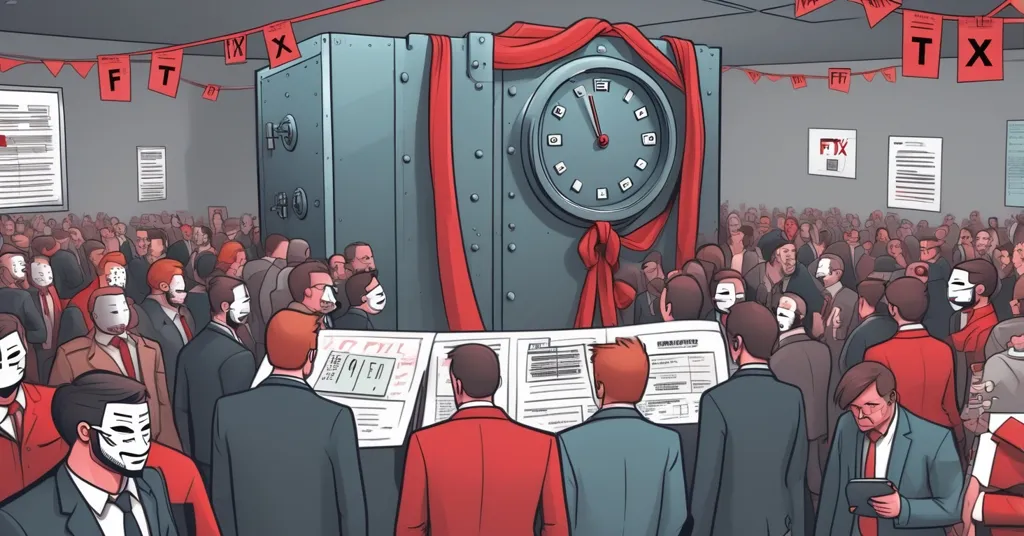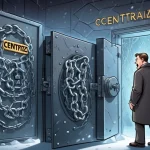BitGo Starts FTX Creditor Payouts Phase 2, But Delays and Access Issues Frustrate Users

BitGo Rolls Out Second Phase of FTX Creditor Payouts, But Delays and Frustrations Persist
Almost three years after the spectacular implosion of FTX, one of the crypto world’s most infamous disasters, BitGo, a prominent crypto custodian, has started crediting accounts in the second phase of creditor repayments. Yet, with funds locked, billions still unpaid, and a maze of bureaucratic and legal hurdles ahead, this move feels like a half-step forward in a marathon of misery for many.
- BitGo credits FTX claims under $50,000 at 120% value, with a 20% interest bonus.
- Funds are inaccessible for withdrawal or transfer until May 30, stoking creditor irritation.
- Delays due to KYC issues, disputed claims, and regional restrictions keep many waiting, with total repayments potentially reaching $16 billion.
The FTX Fallout: A Quick Recap for the Uninitiated
For those who missed the drama, FTX was a top-tier cryptocurrency exchange that collapsed in November 2022 under a storm of liquidity issues, exposing egregious mismanagement and alleged fraud by its leadership, notably co-founder Sam Bankman-Fried. Millions of users worldwide saw their funds vanish into thin air—some lost life savings overnight. Bankruptcy proceedings began almost immediately, aiming to repay creditors, but the road to recovery has been a slog through legal quicksand. Now, nearly three years on, BitGo, a crypto custodian founded in 2013 and known for secure storage of digital assets, is stepping in alongside Kraken to handle the latest round of payouts, as announced by FTX creditor advocate Sunil Kavuri on social media platform X. For a deeper dive into the collapse, check out this detailed overview of FTX’s bankruptcy.
BitGo’s Role and the Payout Catch-22
BitGo isn’t new to handling high-stakes crypto assets. With a track record of safeguarding billions for institutions, their involvement brings a shred of confidence to a process marred by distrust. Their current task: crediting accounts for FTX claims under $50,000 at 120% of the original value, with the extra 20% as interest to compensate for the agonizing wait. So far, so good, right? Not quite. Creditors can see the funds in their accounts but can’t withdraw or trade them until May 30. It’s the ultimate crypto taunt—your sats are there, but you can’t stack ‘em yet. FTX has disbursed roughly $6.2 billion across two phases, a significant chunk but peanuts compared to the estimated $16 billion that could eventually be repaid. For countless creditors, this payout phase is just another chapter in a never-ending wait. For more on BitGo’s involvement, see this update on BitGo’s role in crypto payouts.
“FTX Distribution to Bitgo has been credited to accounts. Includes FTX Bahamas process. Can be viewed but not traded until 30th May.” – Sunil Kavuri
Why the Endless Delays? Unpacking the Mess
The reasons behind the slow trickle of funds are as tangled as FTX’s pre-collapse balance sheets. First, there’s KYC, or Know Your Customer, a verification process where users must submit personal identification to prove who they are. Missing documents or tiny discrepancies can grind payouts to a halt, and many creditors are stuck in this limbo. Then there are disputed claims—cases where the amount owed or the claim’s legitimacy is under question—adding layers of red tape, even for smaller sums. Geography plays a cruel role too. Creditors in regions like Africa, Asia, the Middle East, and Eastern Europe face restrictions due to inconsistent regulations and jurisdictional barriers, leaving them sidelined. Curious about the broader issues? Here’s an insightful discussion on challenges with FTX creditor repayments.
For those tied to the Bahamas claims process—a separate legal track because FTX was headquartered there—the frustration is even deeper. Despite Kavuri’s mention of inclusion, many report being locked out of the distribution stage. As the FTX Support page states:
“If your claim was traded or you elected into the Bahamas process, you will not be able to access Step 9.”
This contradiction between announcements and reality hints at miscommunication or partial rollouts, leaving affected users in the dark. It’s a stark example of centralized systems failing at the most basic level: clarity. Community discussions highlight these issues, like this thread on Bahamas claims access problems.
Legal Battles: A Distraction or a Necessity?
Adding insult to injury, FTX’s bankruptcy estate is bogged down in legal slugfests that sap time and resources. A $2 billion lawsuit with Binance over a soured share buyback deal looms large, while separate actions against NFT Star, an NFT marketplace, and Delysium, an AI platform, chase undelivered tokens that creditors might never see. These clawback efforts—legal attempts to recover assets from third parties to bolster repayments—sound noble, but to many, they look like lawyers fattening their wallets while regular folks wait. Some creditors and industry watchers have openly accused bankruptcy professionals of prioritizing fees over speed. It’s the kind of centralized nonsense that makes you wonder why we’re not using blockchain to settle this mess faster. For the latest on the Binance dispute, see this update on the $2 billion share buyback lawsuit.
The Human Toll: More Than Just Numbers
Beyond the stats, the FTX saga is a gut punch to real people. Scour online spaces like Reddit, and you’ll find heartbreaking tales—one user, after jumping through every KYC hoop, still sees their under-$50,000 claim flagged as “disputed,” with no resolution in sight after years. Picture logging into your account, seeing funds credited, knowing you can’t touch them, and wondering if the next delay will stretch into 2025. These aren’t just ledger entries; they’re shattered plans, lost trust, and sleepless nights. Community frustration is palpable in threads like this discussion on BitGo payout delays. Meanwhile, criminal proceedings against FTX executives have outpaced repayments. Caroline Ellison, former CEO of Alameda Research (FTX’s sister trading firm), got a reduced sentence and could be free by May 2026. Sam Bankman-Fried, the face of this fiasco, is serving a 25-year term with a possible cut of up to 4 years for good behavior. Justice moves swift for the suits, but for users? Good luck.
Centralized Chaos vs. Decentralized Ideals
Let’s cut to the chase: the FTX collapse is a flaming billboard for the dangers of centralized exchanges. Bitcoin’s golden rule—“not your keys, not your crypto”—has never rung truer. If users had embraced self-custody, millions might’ve dodged this disaster. As Bitcoin maximalists, we see BTC as the unassailable store of value, free from the entanglements of over-leveraged platforms like FTX. But let’s not ignore the broader ecosystem. Ethereum and altcoins carve out spaces Bitcoin doesn’t touch—think smart contracts automating DeFi or niche tokens fueling projects like Delysium. Could a decentralized mechanism, maybe a DAO on Ethereum, streamline creditor claims without the centralized middlemen currently mucking things up? It’s worth pondering. For a deeper analysis of these risks, read this breakdown of centralized exchange failures.
That ties into effective accelerationism, or e/acc—the push to speed up innovation to outrun disasters like this. Why are we slogging through clunky legal systems when blockchain could offer transparent, automated solutions for bankruptcy payouts? The tech exists; the will doesn’t. Compare this to Mt. Gox, where creditors waited over a decade for partial repayments. Sure, FTX is moving faster, but not fast enough. The industry hasn’t learned nearly as much as it should’ve by now.
Regulatory Patchwork: Another Layer of Pain
The regional restrictions screwing over creditors in places like Africa and Asia highlight a glaring issue: global crypto bankruptcies are a regulatory nightmare. Differing laws and inconsistent enforcement mean some users are arbitrarily locked out based on where they live. We’re all for freedom and privacy, but there’s a desperate need for harmonized standards that don’t choke innovation or leave users stranded. Governments haven’t figured this out, and they probably won’t anytime soon. Until then, centralized failures will keep hitting the most vulnerable hardest. For specifics on BitGo’s repayment efforts, check out this report on phase 2 distribution details.
What Can FTX Creditors Do Right Now?
If you’re among the FTX creditors trapped in this quagmire, there are a few actionable steps to take while waiting for May 30 or beyond. Start by checking your KYC status on the FTX claims portal—make sure all ID documents are submitted and match perfectly to avoid pointless delays. Keep an eye on updates from voices like Sunil Kavuri on X, but always cross-check with official FTX Support announcements to sidestep misinformation. If your claim is flagged as disputed, gather any transaction records or proof of funds and reach out to the bankruptcy team. It’s a long shot, but better than twiddling your thumbs. And if you’re not affected by FTX, take this as a wake-up call: grab a non-custodial wallet like Electrum or BlueWallet and get your Bitcoin off exchanges. Control your keys, control your future.
Key Questions and Takeaways on FTX Repayments
- What’s the latest on BitGo’s role in FTX creditor payouts?
BitGo is managing the second repayment phase, crediting claims under $50,000 at 120% value with a 20% interest bonus, though funds can’t be accessed until May 30. - Why are so many FTX creditors still waiting for their money?
Delays stem from KYC verification snags, disputed claims, regional restrictions in areas like Africa and Asia, and complications with the Bahamas claims process. - How are legal disputes affecting the repayment timeline?
FTX’s lawsuits, including a $2 billion clash with Binance and cases against NFT Star and Delysium, are draining resources and slowing down creditor payouts. - What does the FTX mess teach us about centralized exchanges?
It exposes the fragility of centralized platforms, reinforcing Bitcoin’s self-custody mantra and spotlighting the potential of decentralized alternatives like Ethereum-based DEXs. - How can blockchain tech accelerate recovery from crypto collapses?
Pushing for innovation through effective accelerationism (e/acc) with tools like smart contracts or DAOs could automate and transparentize bankruptcy processes, cutting through centralized red tape. - What steps can creditors take to navigate ongoing delays?
Verify KYC compliance, monitor official updates, submit evidence for disputed claims, and prepare for future phases by staying proactive with the claims portal.
The BitGo payouts mark a small victory for some FTX creditors, but for many, they’re a mirage in a desert of delays. They prove recovery is possible, yet scream loud and clear how broken things get when trust is handed to centralized gatekeepers. For Bitcoin purists, it’s a rallying cry to double down on decentralization. For the wider crypto community, it’s a challenge to build smarter—whether through altcoin innovation, new protocols, or shoving back against stifling regulation. One thing’s non-negotiable: the path to $16 billion in repayments can’t be another decade of stumbles. The industry must forge systems that make these debacles obsolete—full stop. For recent news on the payouts, take a look at this report on BitGo crediting FTX creditors.



